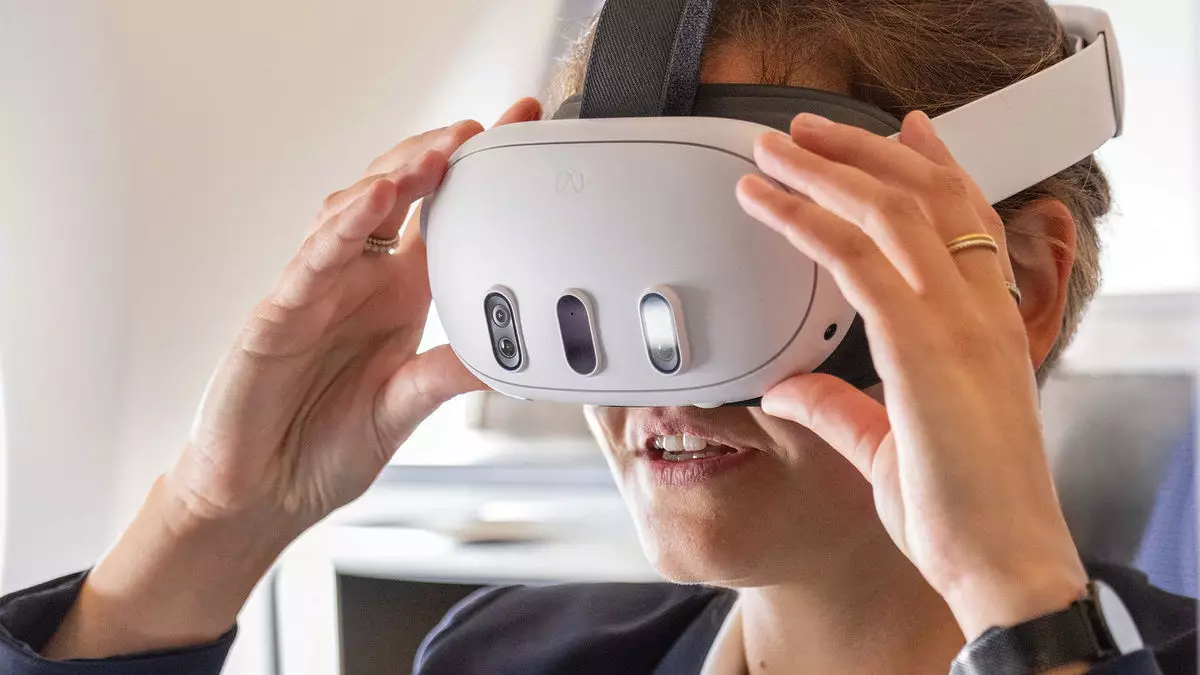As airlines continuously strive to enhance the passenger experience, Lufthansa has taken a pioneering step by introducing virtual reality (VR) headsets into their business-class cabins. Launched on October 11, 2023, during an experimental phase on select routes, this initiative showcases how technology is shaping the landscape of in-flight entertainment. With the inclusion of Meta Quest 3 mixed-reality headsets, Lufthansa aims to provide an immersive travel experience that could redefine how we view air travel.
The initial rollout of VR technology is currently limited to a select group of passengers on the new Airbus A350 Allegris business-class cabins, specifically on routes such as Munich-San Francisco and Munich-Chicago O’Hare. This exclusive access allows Lufthansa to gauge passenger responses and fine-tune the technology before broader implementation. By utilizing a mixed-reality headset, travelers can choose between immersing themselves in a fully virtual space or maintaining awareness of their physical surroundings.
This twofold approach to virtual reality allows travelers to experience various forms of entertainment. Initial content offerings range from movies and meditation sessions to interactive games like virtual chess. In the immersive movie experience, passengers feel as if they’re watching a film on a grand screen, instead of a cramped seatback display. Moreover, the interactive chess game promises a new level of engagement, whereby players can physically move pieces as though they are sitting at a real board, complete with virtual human avatars as opponents. Such innovative offerings mark a significant shift in how in-flight content is consumed, potentially ushering in a new era for airline entertainment.
The immersive experiences delivered through Lufthansa’s VR headsets offer an exciting glimpse into the future of air travel. Unlike traditional seatback systems that retain a two-dimensional format, these mixed-reality applications provide dynamic previews of destinations through virtual flights. Instead of passively viewing images in a brochure, passengers can explore their travel destinations in a compelling way, enhancing their anticipation and enriching their overall travel experience.
Lufthansa executives, including Bjoern Becker, head of future intercontinental experience, see tremendous potential for VR beyond mere entertainment. Virtual reality could serve as an advertising platform, allowing airlines to create unique in-flight marketing opportunities. Imagine passengers taking virtual vehicle test drives mid-flight, merging travel with commerce seamlessly.
Streaming content is also on the horizon, with plans for passengers to connect to the aircraft’s Wi-Fi via their VR headsets. Future possibilities include enhanced viewing of live sporting events, creating an electrifying atmosphere on board as passengers cheer for their teams.
While Lufthansa is optimistic about integrating VR technology into their in-flight services, the airline industry remains divided over its long-term viability. Executives from other major airlines voiced skepticism regarding the dominance of VR headsets over traditional seatback entertainment systems. Delta’s managing director of customer experience, Ekrem Dimbiloglu, pointed out that a substantial percentage of passengers still engage with seatback screens. This trend indicates a level of comfort and preference that VR headsets must compete against.
Antonio Fernandez, vice president of Aeromexico, reinforced this sentiment by asserting that traditional seatback screens will remain prevalent for the foreseeable future. His assertion suggests that the evolution of passenger expectations will require a dual approach to in-flight entertainment that incorporates both seatback screens and emerging technologies like VR.
Some industry leaders foresee an integration of both systems, creating a multi-screen experience that caters to diverse passenger preferences. Virgin America CEO Shai Weiss anticipates that along with technological advances, passenger wants will drive how these systems evolve in tandem.
The journey of integrating virtual reality into air travel is still at its nascent stage. While it offers exciting prospects for revolutionizing the in-flight entertainment experience, various factors will determine its success. Passenger acceptance, comfort, and the need for familiar interfaces can either facilitate or hinder widespread adoption. A tight balance between innovative technology and passenger convenience must be maintained.
As airlines like Lufthansa continue to experiment with mixed-reality technologies, the future of in-flight entertainment may very well hinge on their ability to adapt to passenger preferences. The coming years will reveal whether VR will take flight as a mainstay in our travel experiences or remain a niche feature reserved for specific classes of service. Ultimately, the evolution of this technology in the airline industry will depend on how well it resonates with global travelers embarking on their journeys.


Napsat komentář